Mouth Breathing Pt. 3: Congenital/Physical Influences
Happy Monday!
I hope your week and weekend were special.
Last week was productive for me, and I’ve enjoyed a lovely weekend with some reading, exercise, sleeping under my biggest tree, art, and a little evening TV entertainment.
I hope you’ve enjoyed learning more about mouth breathing and the related issues.
Today, I will begin my blog by sharing Pt. 3 of the series: Congenital/Physical Sources. After that, I’ll share a great photo of Eric Hulse’s 4 Doctor club from his class room.
Mouth Breathing Pt. 3: Congenital/Physical Influences
There are two common physical challenges that typically result in mouth breathing challenges:
1. Congenital: These challenges are directly related to:
A. Parental nutrition
B. The Cranial Rule of 1/3s
In my video today, I refer to the pioneering works of Francis Marion Pottenger, MD and Weston A. Price.
Both Price and Pottenger gave comprehensive evidence of the fact that eating processed foods created damage to first generation eaters and their offspring. In his book, “Pottenger’s Cats.”
Pottenger shows how the degenerative changes were passed on in both cats and human beings as a result of deficient diet.
In this section of my vlog, I show how you can assess the likelihood that one or both of your parents were malnourished when you were conceived.
I also highlight that challenges with flat feet are an indicator of congenital challenges related to nutrition, and how these challenges relate mouth breathing.
2. Structural: In this section of my video, take you through an explanation of some key indicators of optimal spinal dynamics, and how postural changes correlate with mouth breathing.
I show that mouth breathing leads to forward head posture, and aberrant postural alignment.
I also suggest that injuries or unresolved injuries leading to some postural changes can trigger a mouth breathing process.
This is due to biomechanical, and muscle recruitment changes as well as a number of other related factors.
Exercise: Exercise technique is very important when we consider the influence exercise has on our posture.
When people enter into resistance training, or any high intensity or high impact training environment without adequate postural development, and motor skills development, mouth breathing can be triggered as a result.
To avoid such unnecessary challenges, I suggest the formula that I teach my students for effective program design:
A. Flexibility/Mobility: The first thing we need to do to prepare the body for exercises with high levels of loading, or repetitious patterns of movement, such as you see in cyclical sports (rowing, running, cycling, etc.) is assure optimal flexibility and joint mobility.
B. Stability: The stabilizer system of the body is a sub-system for dynamic motor activity or functional movement.
As I often say to my students, “You can’t fire a cannon from a canoe” (and not go swimming).
If we lack flexibility, joint mobility, and stability, loads and shock cannot be effectively dissipated through the musculoskeletal system.
When we are over-exposed relative to our abilities, we develop compensation patterns.
Compensation patterns lead to muscle imbalance syndromes, many of which encourage mouth breathing.
Additionally, because compensation patterns become learned patterns, people begin to have rigidity in some areas, and hypermobility in other areas of their structure.
This is a formula for long-term problems, injuries, and poor performance.
C. Strength: Once the above qualities are met, and the body is functionally flexible, well integrated, and capable of meeting the static and dynamic stabilization needs demanded by our chosen environment, we can safely develop strength in the motor system.
Strength is a functional correlate to power, and moving any thing quickly requires that you first be strong enough to move it slowly.
Strength is a measure of how much work we can do (how much we can lift) without concern for the issue of time; no matter how long it takes you to complete a heavy lift, if you can complete it, you are performing strength training.
If you can’t lift a 60-pound medicine ball, you can’t throw it (Power)!
D. Power: Power training is a term that relates to how much work we do relative to time.
Olympic lifting should really be called power lifting because the movements are very fast, and you can’t compete in Olympic lifting without being able to move large loads quickly.
In general, if you can do a complete cycle of a given movement or exercise in less than about 1 second, it is a power exercise.
For example, If you try to dead lift two times your body weight, it is unlikely you can get the weight off the floor to standing and back down to the floor in less than one second.
It is likely you could deadlift 1/3rd of your body weight in less than one second.
As I show in my correspondence course titled, Scientific Back Training, as speed of movement increases with lifting, structural loading (joint forces) can go up very quickly.
For example, if you double the speed of a 30-pound box lift, you can get four times the forces through the back and legs.
This is why each of the successive steps are so important as we move into power training environments.
Unfortunately, a huge number of people today enter into power training exercise environments without nearly the preparation needed for such environments.
The negative postural responses to such exposure can and often does trigger mouth breathing.
In this section of my vlog, I also point out that being sedentary can cause problems that result in mouth breathing.
E. Viscero-Somatic Influences: In this section of my video, I highlight how organs can cause changes in structural control, leading to poor posture and mouth breathing challenges.
There are a few diagrams, such as the “piano spine” diagram (p. 121) showing how organs influence muscles in my book, How To Eat, Move and Be Healthy!
I finish my blog today with the following tips to help you prevent, or recover from mouth breathing:
1. Read my book, How To Eat, Move and Be Healthy! and perform the assessments shared for your core (abdominal) function, and for your diet and lifestyle.
Following the advice in the book addresses many common challenges that lead to mouth breathing.
2. My book titled, The Golf Biomechanic’s Manual is recommended for those of you who want a more detailed postural/structural assessment of relevant muscle length changes than I offer in How To Eat, Move and Be Healthy!
3. My correspondence course titled, Scientific Back Training has a number of highly practical tests to determine if you have muscle imbalances, weak muscles not working correctly, and gives corrective methods.
4. Scientific Core Conditioning is my correspondence course that teaches you how the core of the body functions, and how it relates to posture and movement.
This program has a variety of tests and a complete exercise progressions to take you from isolation (corrective) to integration exercises.
These exercises are essential components of the postural correction process, as well as for optimizing human movement in general. This course is the sister course to Scientific Back Training.
5. If you need help, you can consult any of our CHEK Institute trained Exercise Coaches, or the CHEKPractitioners at higher levels (1-4) of training.
You can also register to enter the program at CHEK Exercise Coach level, which is my entry level program for those wanting to have optimal gym/exercise and program design skills, or to work as personal trainers.
6. CHEK Institute Holistic Lifestyle Coaching (HLC) (Levels 1-3) are trained in all the essentials of how diet effects the body and know how to help you clean up your body and your diet to address related mouth breathing issues.
CHEK Institute HLC Level 1 program is open to the public and is an excellent three-day course designed to teach you to master all the information in my book, How To Eat, Move and Be Healthy!, and more.
7. In my video, I show how you can use a weighted bag on your head during activities of daily living, and with exercise to facilitate postural correction as part of a corrective program for mouth breathing challenges.
8. One option I suggest you can try to reduce mouth breathing is nasal strips. Nasal strips help keep your nasal airways open, and are readily available on Amazon and other vendors.
They are easy to use, don’t hurt, and can’t hurt to try .
I also recommend a structural integration method called “Rolfing” as a non-surgical approach to healing from mouth breathing challenges. You can look under “Rolfer” in the phone book or on the web to find them.
The method was founded by Dr. Ida Rolf. To learn more, go to: https://www.rolfguild.org/
9. Being aware that the more thickness you have in a pillow, the more postural challenges you are likely to create is important for mouth breathers.
Here in my video, I suggest the use of flat, natural fiber pillows, and laying on hard floors for postural correction.
10. I finish the presentation by reminding all of you that CHEK Exercise Coaches and CHEK Practitioners have the skills to effectively asses your posture, and design a highly individualized exercise program to prevent, and aid in the recovery of mouth breathing challenges.
CHEK HLC Practitioners can help you identify any of the relevant diet and lifestyle challenges that need to be looked at if you want to be free of mouth breathing as well.
I hope you enjoy my vlog on addressing the challenges of mouth breathing today.
HLC3 Eric Hulse and His 4 Doctor Club for School Children

Eric Hulse is a schoolteacher in New York, as well as being a CHEK Holistic Lifestyle Coach Level 3 Practitioner.
Eric created and has been running a “4 Doctors Club” for his school kids for a few years now, and I love seeing the photos of the kids and what they’ve grown.
As you can see above, he’s got a great group of healthy 4 Doctor kids and they have some lovely organic crops they’ve grown in their school project.
Every now and then, Eric creates videos with the kids. Listen to these kids talk about their experience!
Eric, “Thank You! for being a healing force in the world”. It is absolutely lovely know that you are teaching such practical, essential wisdom to children. They are our future.
CHEK Course Completion
Please congratulate our newest CP1 Graduates! You are well on your way to helping people heal and become better integrated!
CHEK Practitioner Level 1
With Donal Carr – Melbourne, AU
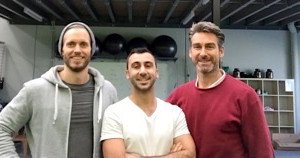 With Matt Walden – Lancashire, UK
With Matt Walden – Lancashire, UK
Thank you Matt and Donal for teaching a great Course!
I hope you all have a great week and that you’ve enjoyed this blog.
If you haven’t seen our blogs at www.chekinstitute.com I think you’ll be pleasantly surprised at how much great information we have there for you!
Love and chi,
Paul Chek

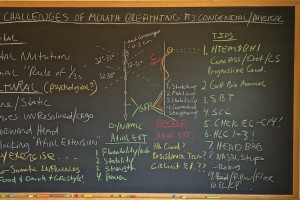
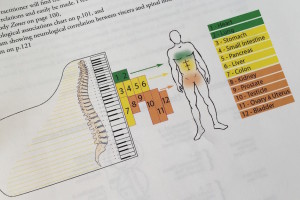
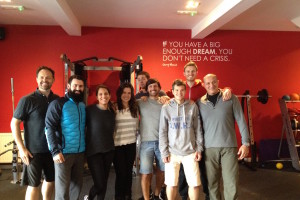

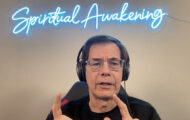



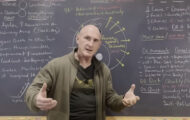







Find me on the web